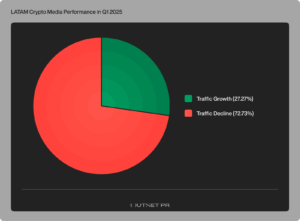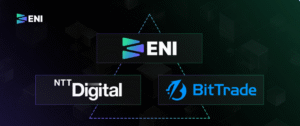
Introduction
Decentralized Finance, or DeFi, has recently been a hot topic in the insurance industry. Articles attempting to clarify what DeFi entails are aplenty in the crypto world. Although insurance is rarely mentioned in the DeFi community, it is one business that has a tremendous possibility to provide investors with trust and preserve their money. Insurance is a high-risk financial industry that necessitates risk mitigation approaches and procedures. The sector is today worth billions of dollars and is plagued by unethical practices. Let us first understand the concept of DeFi.
What is DeFi
DeFi’s allure is clear: a borderless, open alternative to every financial service imaginable, including savings accounts, insurance, loans, trading, and more. Decentralized apps, or “dApps,” are blockchain-based applications that do away with the requirement for a centralized authority, as in traditional finance.
DeFi is inspired by blockchain, the technology behind the digital currency bitcoin, which allows multiple entities to hold a copy of a transaction, implying that it is not controlled by a single, central source. This is significant because centralized systems and human gatekeepers can limit processing speed and sophistication while giving users less direct control over their money.
The Potential of DeFi
DeFi projects are addressing long-standing issues and inefficiencies in our current system by increasing financial inclusion, raising liquidity, and lowering costs. Even outside of banking, interest in DeFi and its potential to improve existing systems is growing.
While DeFi is still in its infancy, numerous examples are demonstrating its potential. Monetary banking services, alternative savings, peer-to-peer lending platforms, and decentralized exchanges are just a few of the many applications that showcase the potential of DeFi. And with the rise in popularity comes many risks. Therefore, it is important to protect yourself from any kind of disruptions in the sector. This is where decentralized finance insurance comes in.
Importance of Insurance in the DeFi
The explosive growth of DeFi raises concerns, such as scaling, gas fees, and, worst of all, theft. DeFi has become a popular hunting ground for hackers. Hackers targeted 15 DeFi platforms for a staggering $120 million in 2020 alone.
The risk of theft has a devastating effect on asset growth and the inflow of new investors into the DeFi ecosystem. This is where DeFi asset coverage comes into play.
DeFi coverage providers, as financial first responders, provide investors with fundamental risk management. DeFi coverage platforms, like traditional finance, are based on risk pooling, transfer, and sharing. Investors who do not have coverage must adopt a lower risk tolerance and accept lower returns. DeFi coverage protocols enable investors to protect their assets without the assistance of a traditional bank.
Decentralized Insurance products, for instance, InsurAce, provide complete protection for DeFi deposits, hedge risk against crypto volatility and flash crashes, and provide security against the risk of crypto wallet theft and attack. They protect users from any potential DeFi risks and cover technical and financial risks, providing investors with a sense of security. Not only that, but the platforms make the entire submission, claiming, processing, and payout process extremely safe, dependable, and transparent.
One of the advantages of such decentralized insurance is that it protects most deposits against loss. DeFi is regarded as secure, and thus as a solution to hacking, particularly on exchange platforms. The operation of so-called “autonomous” smart contracts has proven difficult. This is due to the lack of upgradeability and the use of smart contracts. Smart contracts use decentralized insurance as an operating system.
Decentralized insurance is self-sufficient. Intermediaries are exempt, so there are no middleman fees. As a result, using decentralized insurance becomes a simplified and low-cost procedure. Decentralized insurance is also transparent, immutable, and allows for the liquidation of crypto-backed assets.
Few Challenges of the Decentralised Insurance
There are currently numerous trading platforms that are highly centralized, which can crowd out and suppress the DeFi sector.
Furthermore, decentralized insurance allows traders to trade publicly, which has raised privacy concerns. Because of the autonomous nature of decentralized insurance, users are unable to change their information and thus cannot interact directly and edit their data. As immutability is a critical component of the decentralized system, this has resulted in numerous disputes and fraudulent cases in the industry. This could affect the demand for decentralized insurance applications.
Because of the transparency and security it provides to investors, decentralized insurance is a promising sector. There are currently only a few products available, but it has the potential to grow and expand in the future. DeFi and its applications, such as Decentralized Finance, will continue to dominate the market for many years.
Conclusion
Although it is still in its infancy, decentralized insurance is rapidly expanding and holds great promise for the industry. The number of products is still small at the moment, but it is certain to grow in leaps and bounds in the coming days. It is predicted that similar to cryptocurrency trading, DeFi and all of its applications will soon rule the market and maybe here to stay for many years to come. As the market matures, decentralized insurance will continue to broaden its product offering. The openness of DeFi presents an exciting opportunity to address underserved markets in developing countries.
I have been into Cryptocurrency since early 2017. I am a very experienced investor, and have made a lot of money from investing in Bitcoin and other digital currencies. I am also a very popular author, and my work has been featured on sites like Forbes, Huffington Post, Business Insider, and more. I am currently working on a book about Cryptocurrency investing, which will be released later this year. In my free time, I write articles and blog posts about the industry for my followers.









